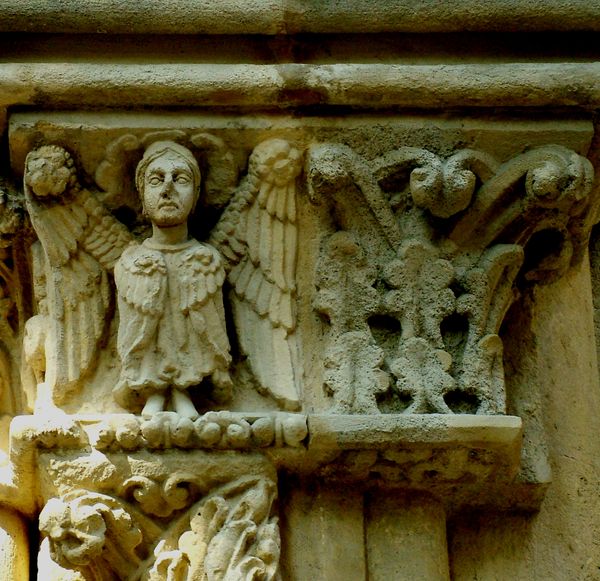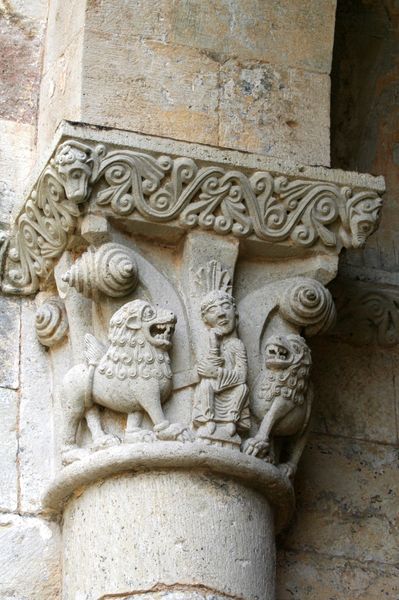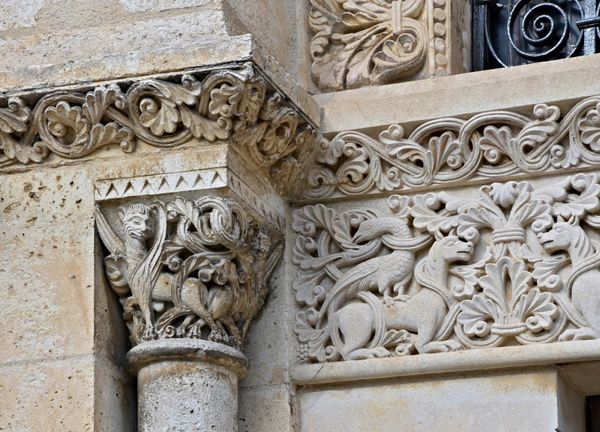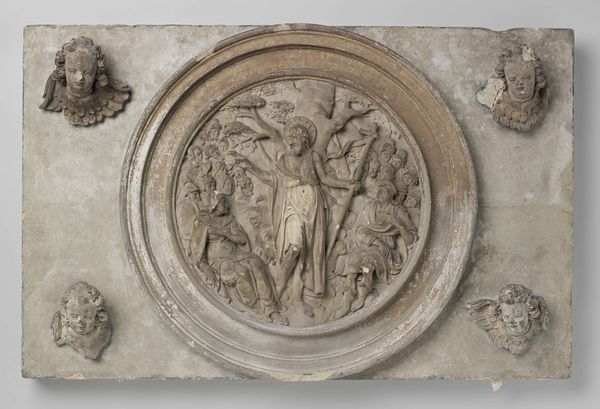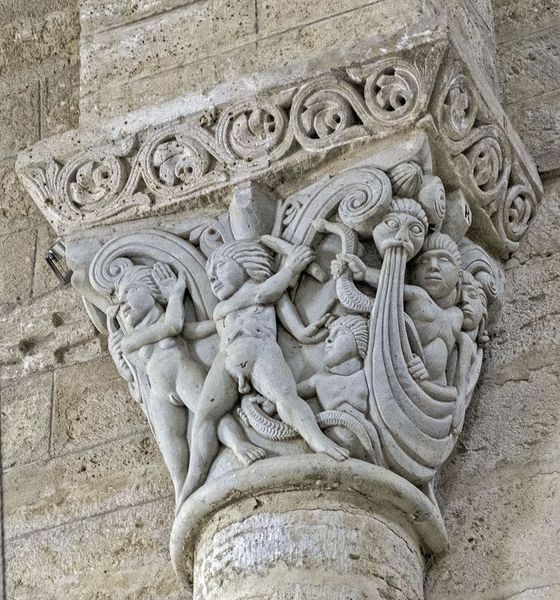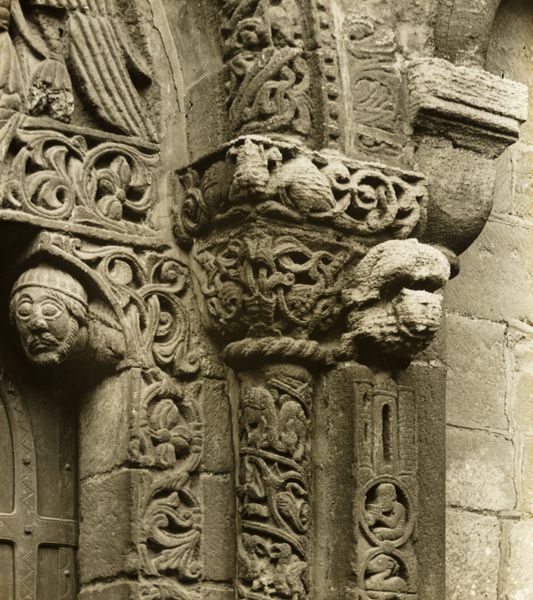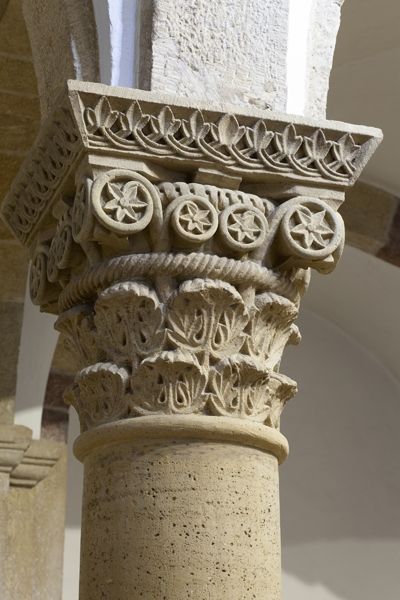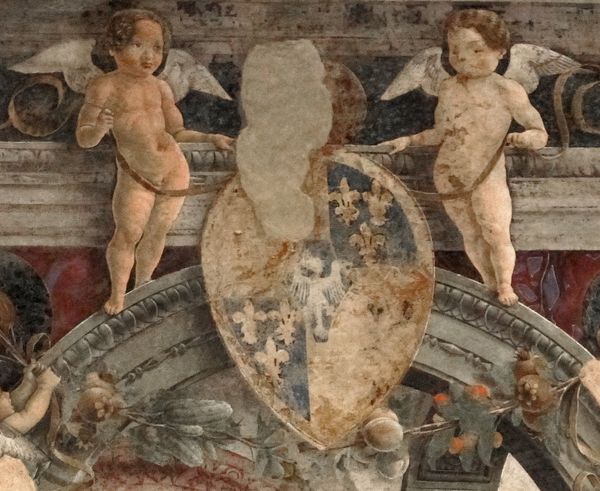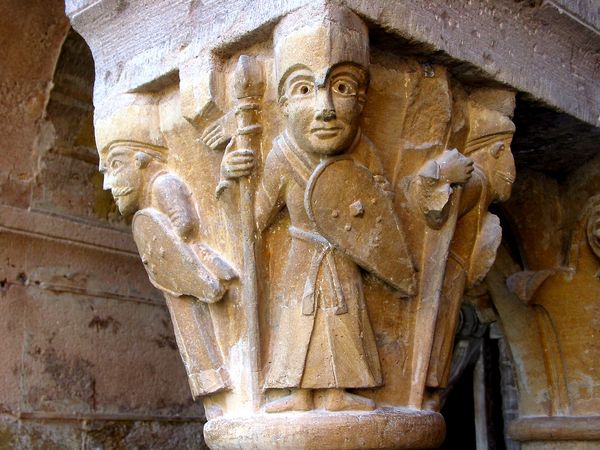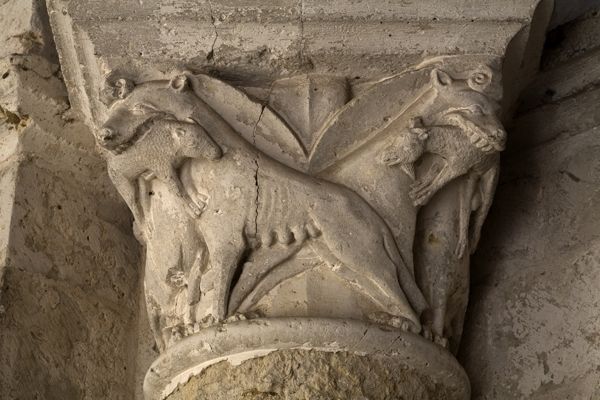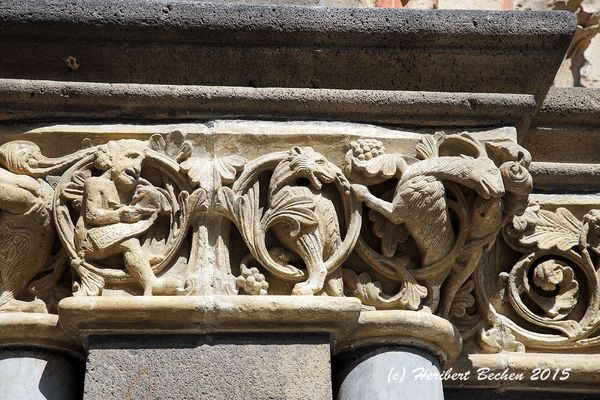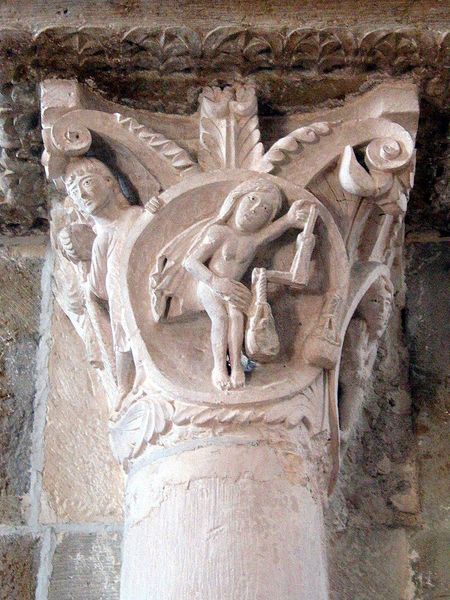
carving, relief, sculpture
#
public art
#
medieval
#
carving
#
sculpture
#
relief
#
figuration
#
historic architecture
#
traditional architecture
#
romanesque
#
sculpture
#
historical building
Copyright: Public domain
Editor: Here we have a Romanesque capital, circa 1180, from the Basilica of Saint Sernin in France. Carved in relief, the sculpture has a rather stern and solemn feel. The figures are so carefully rendered, almost rigidly so. How do you interpret this work in light of its history and context? Curator: It's crucial to see this capital within the larger socio-political landscape of Romanesque Europe. The Church was the dominant force, and its power was visibly expressed through architecture and art. This sculpture, part of a basilica, wasn't merely decorative. What purpose do you think these kinds of images served for the wider population? Editor: I guess it served as visual instruction... perhaps a didactic purpose? The common folk couldn't read Latin, so they needed images to understand the scriptures. Curator: Precisely! Consider also that art in public spaces reinforced social order and religious doctrine. The positioning, the scale…even the rather stiff and solemn appearance you noted contributes to a sense of authority and timelessness. It embodies an appeal to tradition during a period of rapid societal changes and crusades. Editor: That makes a lot of sense. I hadn’t thought about it as a statement of authority in that specific way before. Curator: And how do you think the concept of “public art” today compares? Is it still intended to reinforce existing structures, or is there more space for debate and disagreement in public spaces? Editor: That's a really good question, a definite shift I think. Looking at this capital in that historical and political context offers so much more than simply regarding it as a piece of stonework! Curator: Agreed! Reflecting on art's function within a specific cultural and political era greatly enhances our understanding and appreciation.
Comments
No comments
Be the first to comment and join the conversation on the ultimate creative platform.
